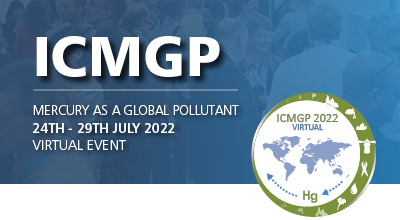| Abstract Title: | Sources and Cycling of Mercury in Freshwaters of Andean Patagonia |
| Presenter Name: | María C Diéguez |
| Company/Institution: | CONICET-INIBIOMA |
| Session: | Special Session - Mercury in the Southern Hemisphere |
| Day and Session: | Wednesday 27th July - Session Two |
| Start Time: | 11:30 UTC |
| Co-Authors: | María C. Diéguez, Soto Cárdenas, C., Queimaliños, C., Rizzo, A., Arcagni, M., Ribeiro Guevara, S. |
Abstract Information :
Andean Patagonia is located in the Southern Volcanic Zone, under the influence of active volcanoes that continuously reshape the landscape and have a great influence on biogeochemical processes at different environmental scales. Most mercury (Hg) studies in Patagonia have been conducted in catchments of Nahuel Huapi National Park (NHNP, Argentina), a protected area characterized by sharp west-to-east bioclimatic gradients (increase/decrease in precipitation/temperature and vegetation grading from humid forests to xeric steppes) and contrasting impacts of deposition. In this study we integrate data on Hg in different environmental compartments including biota and delineate key processes in Hg cycling in catchments of NHNP. Atmospheric mercury levels in NHNP are within background concentrations (<1 ng m-3) and speciation patterns fluctuate with volcanic eruptions and forest fires. Hg levels in the ultraoligotrophic/oligotrophic freshwaters of NHNP are moderate to high, characterizing by the prevalence of Hg2+ (~98%) and low CH3Hg (<3%), high THg:DOC ratios, and wide spatial and seasonal fluctuations. THg levels in streams and lakes relate directly with terrestrial dissolved organic carbon (DOC), highlighting DOC-Hg inputs from the catchment. In lakes, photo- and biodegradation processing (tracked through optical DOC proxies) enhance the production of Hg0 in the illuminated upper layers. Higher THg levels in the lakes match with chlorophyll a peaks indicating Hg stored in phytoplankton; whereas in streams Hg relates with inorganic particles. Smaller plankton fractions (nano and microphytoplankton) present higher THg concentrations, decreasing in planktonic consumers, and with elevated values in some fish species. Differential THg and CH3Hg bioaccumulation in fish species with different feeding habits point out two Hg trophic pathways: a benthic pathway (from sediments to benthic macroinvertebrates and benthivorous fish), and a pelagic pathway (from water, plankton, foraging fish, to piscivorous fish).



